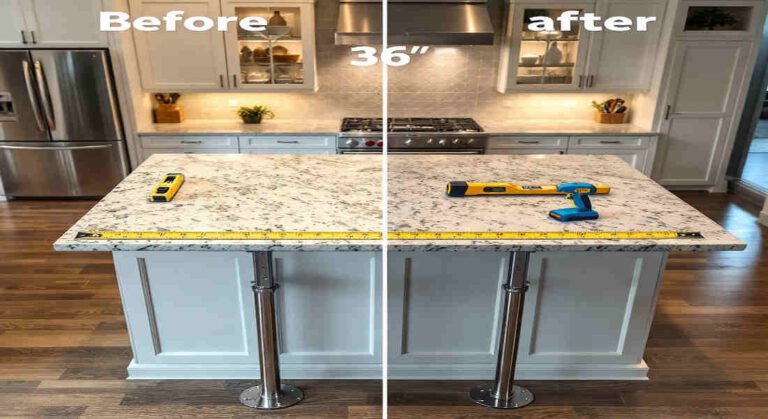A well-designed kitchen is not just about aesthetics; it’s also about functionality, comfort, and ergonomics. One critical factor in ensuring your kitchen is both beautiful and practical is the height of your countertops. Whether you’re remodeling or simply trying to make your kitchen more comfortable for everyday use, knowing how to raise home kitchen counter height can transform your space into one that’s tailored to your needs.
Why Kitchen Counter Height Matters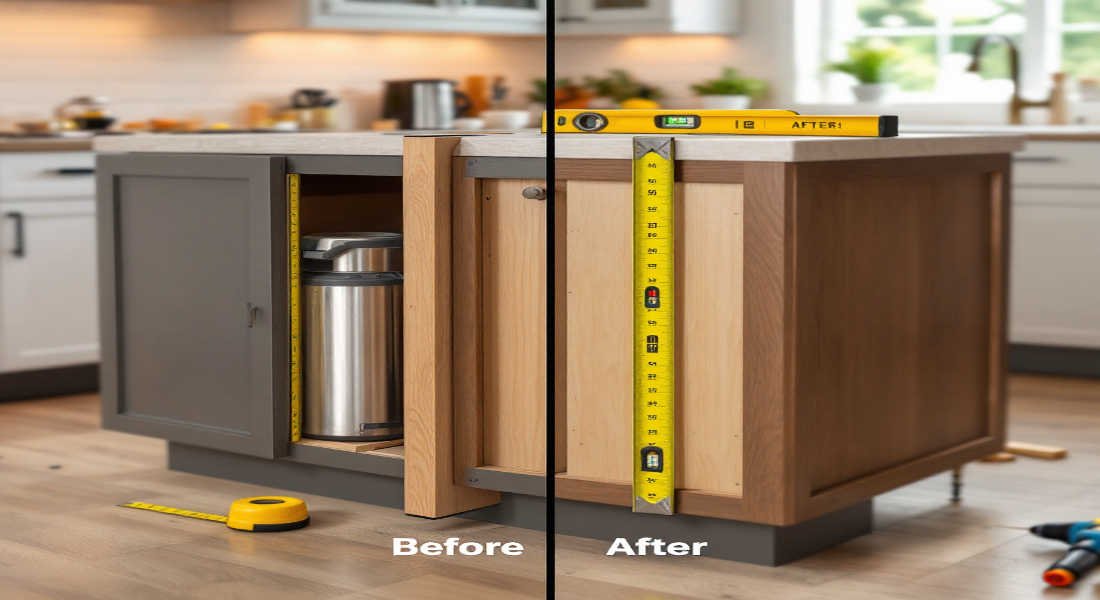
The height of your kitchen counters directly impacts how you interact with your space. Imagine constantly bending over while preparing meals or struggling to reach items comfortably. Over time, this can cause physical strain, especially if the counters are too low for your height or personal preferences.
There are several reasons why someone might want to raise their kitchen counter height:
- Ergonomics: Taller individuals may find standard counters too low, causing discomfort or back strain.
- Functionality: Adjusting counter height can accommodate appliances, sinks, or specific cooking needs.
- Aesthetics: Higher counters provide a sleek, modern look, especially when paired with thicker countertops.
Now that we’ve set the stage, let’s break down the details, starting with the current standard for kitchen counters.
Understanding Standard Kitchen Counter Height
What is the Standard Kitchen Counter Height?
The standard kitchen counter height is typically 36 inches (91 cm) from the floor to the countertop surface. This height works well for most people, providing a balance between comfort and practicality. It also allows for compatibility with standard appliances like dishwashers and ovens that fit underneath the counter.
Why 36 Inches is the Standard
The 36-inch standard has been around for decades, primarily because it caters to the average adult height. Here’s why it’s commonly used:
- Ergonomics: For most individuals, this height allows for comfortable food preparation without excessive bending or reaching.
- Appliance Compatibility: Many kitchen appliances are designed with this standard height in mind, ensuring seamless integration.
Variations Due to Countertop Thickness
The overall height of your counters can vary slightly depending on the thickness of the countertop material. For example:
Countertop MaterialTypical ThicknessImpact on Height
Laminate 1-1.5 inches Minimal
Granite/Quartz 2-3 centimeters adds noticeable height
Butcher Block 1.5-2 inches Moderate increase
When Standard Height Doesn’t Work
While 36 inches is the norm, it’s not suitable for everyone. For instance:
- Taller or shorter individuals may require adjustments for comfort.
- Homes designed for accessibility (ADA compliance) often feature lower counters.
- Custom designs with vessel sinks or thicker countertops might alter the overall height.
Understanding the basics of standard counter height lays the foundation for why and how you want to raise it.
Reasons to Raise Your Kitchen Counter Height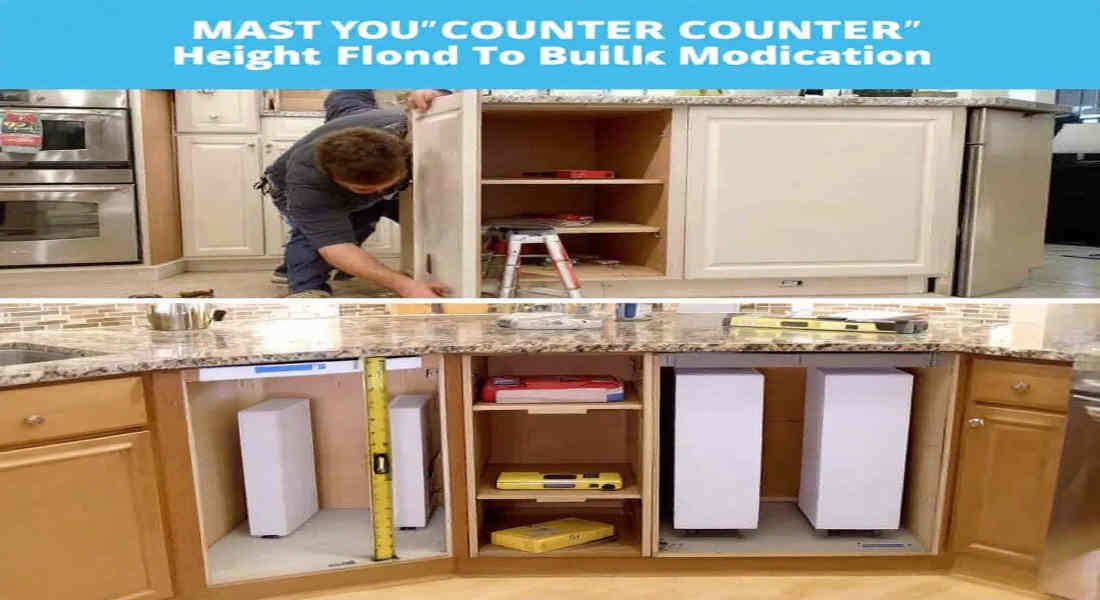
Raising your kitchen counters isn’t just about aesthetics; it’s often a practical solution to common household problems. Here are some of the main reasons why people choose to raise their counter height.
You may also read (home kitchen fire incident).
Personal Ergonomic Needs
If you’re taller than average, working with standard-height counters can lead to back pain and discomfort. Raising the counters ensures that you can prepare meals, wash dishes, and perform other tasks without straining your posture.
Remodeling and Design Changes
Many homeowners raise their counters as part of a larger kitchen remodel. Whether you’re updating the entire layout or making small improvements, adjusting counter height can help create a kitchen that aligns with your vision.
Appliance Compatibility
Modern appliances, like certain dishwashers or under-counter fridges, need more space than standard counters allow. Raising the countertop ensures everything fits seamlessly.
Style and Aesthetic Preferences
Thicker countertops are increasingly popular in contemporary kitchen design. By raising the counter height, you can create a more luxurious and modern aesthetic.
Multi-Height Kitchen Zones
Some kitchens feature work zones at different heights to cater to various tasks. For example, a higher counter might be designated for baking, while a lower section is used for chopping.
These reasons highlight why adjusting counter height is often more than just a structural change—it’s a lifestyle upgrade.
How to Raise Home Kitchen Counter Height: Basic Methods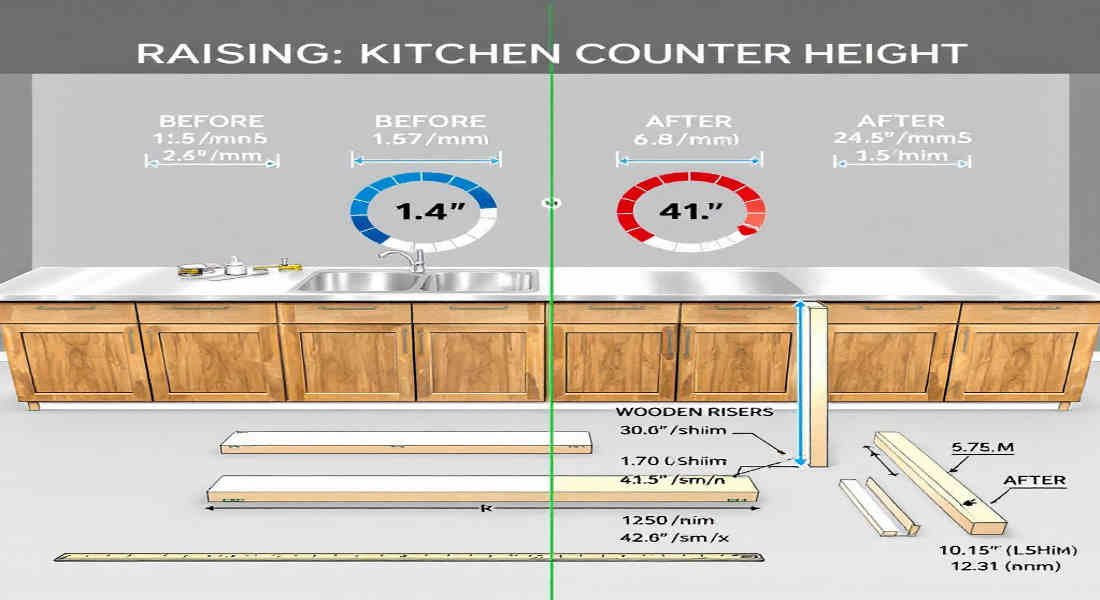
Now, let’s get into the practical steps for raising your kitchen counters. There are two primary methods to achieve this, depending on the scope of your project.
Method 1: Separating and Raising the Countertop
This is one of the most common and easiest methods for raising counter height.
Steps to Follow:
- Detach the Countertop: Start by removing the countertop. This involves unscrewing fasteners and carefully breaking any glue joints.
- Insert Raising Material: Place materials like shims, plywood, or MDF (medium-density fiberboard) underneath the counter to achieve the desired height. Most adjustments can raise the counter by 1-2 inches.
- Reattach the Countertop: Secure the countertop back into place, ensuring it’s level and stable.
- Adjust Cabinet Fascia: You may need to modify cabinet fascias or drawer fronts to align with the new height.
- Plumbing Adjustments: If the counter includes a sink, lengthen the plumbing tailpieces and adjust the connections.
Pros:
- Cost-effective and simple.
- Minimal structural changes.
Cons:
- Limited height increase (up to ~2 inches).
- May require extra finishing work for aesthetics.
Method 2: Raising the Base Cabinet
For those looking to achieve a more significant height adjustment, raising the entire base cabinet is the way to go.
Steps to Follow:
- Remove Cabinets from the Wall: Carefully detach the cabinets from the wall.
- Build a Frame: Construct a sturdy frame using wood or metal to raise the cabinets to the desired height.
- Secure Cabinets: Reattach the cabinets to the frame and secure them to the wall.
- Finishing Touches: Add trim or molding to cover the frame and create a seamless look.
Pros:
- Greater flexibility in height adjustment.
- More durable and long-lasting.
Cons:
- Labor-intensive and time-consuming.
- May require professional assistance for complex tasks.
Additional Tips to Raise Counter Height Easily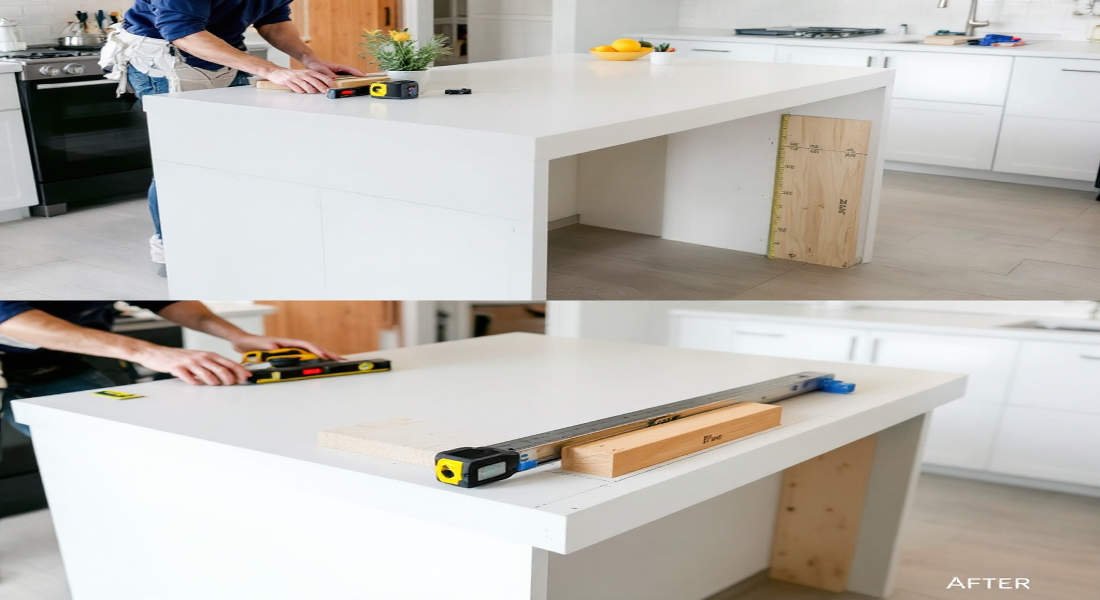
If you’re looking for quick and effective ways to boost counter height, consider the following tips:
- Install Thicker Countertops: Upgrading to a thicker countertop material (e.g., moving from 2 cm to 3 cm) can add height without significant structural changes.
- Backsplash Adjustments: If you’re raising counters, you may need to remove and reinstall the backsplash for a cohesive look.
- Measure Appliances: Ensure that the new counter height doesn’t interfere with appliances or create gaps.
- Consult Manufacturers: Check with countertop manufacturers about material thickness and installation tips.
DIY vs Professional Help: What You Should Know
When deciding whether to tackle this project yourself or hire a professional, consider the following.
DIY Tasks:
- Shimming or raising countertops.
- Simple plumbing adjustments.
- Removing and reattaching countertops.
When to Hire a Professional:
- If significant structural changes are required.
- For complex plumbing or electrical adjustments.
- When working with heavy countertop materials like granite.
You may also read (home kitchen countertop painting project).
